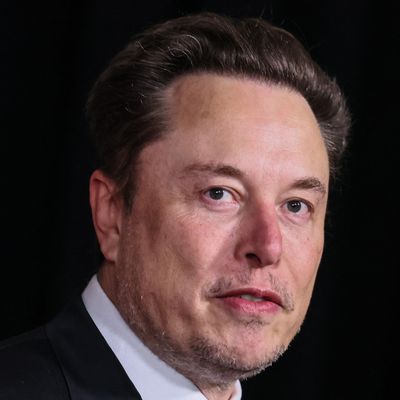
Elon Musk doesn’t seem to know what he wants Tesla to be. At its core, the company makes electric vehicles, and at that it has done exceptionally well. But the Tesla of 2024 is in a kind of corporate limbo. Instead of discussing its flagship EVs, Musk likes to talk about Tesla’s newer, flashier products, like its nascent artificial-intelligence system and its humanoid robot. And then there’s the Robotaxi — the biggest of the new businesses, the one that Musk says will fundamentally change what Tesla does. Musk has all but pinned Tesla’s future to a vision of his cars becoming Ubers propelled by his AI network, which will act as the brain behind the wheel, bringing riders wherever they need to go on demand. It’s a big-picture vision of a world-changing technology that brings about a near utopia without drivers, a place with far fewer car crashes and, as far as investors are concerned, an end to labor costs for drivers. It’s a complicated gamble that could pay off like few others the world has ever seen, yielding trillions of dollars in revenue. Wall Street has loved the idea so much that investors reversed an earlier loss this year and made Musk once again the world’s richest man, and by a pretty wide margin.
But it looks like patience has already started to run short. In Tesla’s newest quarterly earnings, released on Tuesday, the autonomous future appears to be a little fuzzier, a little more out of reach, than it had seemed just a few months ago. That evening, Musk mused online about taking $5 billion out of Tesla and investing it into one of his other companies, xAI. (To be clear, this is not the company formerly known as Twitter.) In response, investors dumped their shares on Wednesday morning, sending the stock falling 12 percent — an overnight loss of $90 billion. “Tesla will need more of that Musk magic to get the innovation it needs sooner rather than later,” Thomas Monteiro, an analyst at Investing.com, said in a note. “Perhaps more than ever in the company’s recent history, Tesla’s investors need results; those will have to come fast — both for the humanoid robot and for the Robotaxi.” After a brief run up, Tesla shares are now lower than they were at the start of the year, before he tried to radically change the company’s focus.
Here’s where Musk fell short. The “timing of Robotaxi deployment depends on technological advancement and regulatory approval,” Tesla reported. Translation: Reliable Robotaxi technology doesn’t exist, and we don’t have government approval for it, either. (Unmentioned is that Tesla is reportedly under a federal criminal investigation for its “Full Self Driving” technology being faulty.) This became clearer after Musk confirmed that its Robotaxi unveiling would be delayed by two months to October in order to “improve the Robotaxi as well as add a couple of other things.” There also appears to be a manufacturing snag, which investors think could set the Robotaxi back to 2027, investors told Bloomberg. That was a surprise because Musk had previously made it seem like a software product, not a whole new car. Overall, the company spent $600 million during the past three months — which would be a rate of $2.4 billion a year — on the AI technology it would use to power these self-driving cars, an absolutely bonkers amount of money even for Musk.
Usually, Musk does pretty well during investor calls. This is the venue, after all, where he’s on the phone with people who tend to be his biggest supporters, those who want to link their fortunes to his. But this one did not go so well. About 15 minutes in, Musk was asked when the first Robotaxi ride would come. His answer was rambling and disjointed and hinged on Tesla’s FSD technology improving, but he said it could be as early as the end of this year. But, he hedged, “my predictions on this have been overly optimistic in the past.” While he was talking, the company’s shares fell about 4 percent in after-hours trading — a clear sign that Wall Street did not like what it was hearing.
Look — Tesla is not failing. It is by far the biggest EV seller in the U.S. It made $25 billion in revenue during the past three months. And it has rebounded somewhat from its abysmal first quarter. But the company’s profits are down 45 percent from last year, competitors are eating into its market share, and it just seems to have no direction. Musk first started promising a Robotaxi in 2016. He said there would be 1 million of them on the road by 2020. It’s possible, of course, that he could oversee some other technological breakthrough that the likes of Apple wasn’t able to pull off with its own self-driving cars. But he can only pull off the same kind of trick so many times before even his most ardent fans start to wonder if he can deliver.
This post was updated to include Wall Street reactions on Wednesday.






























